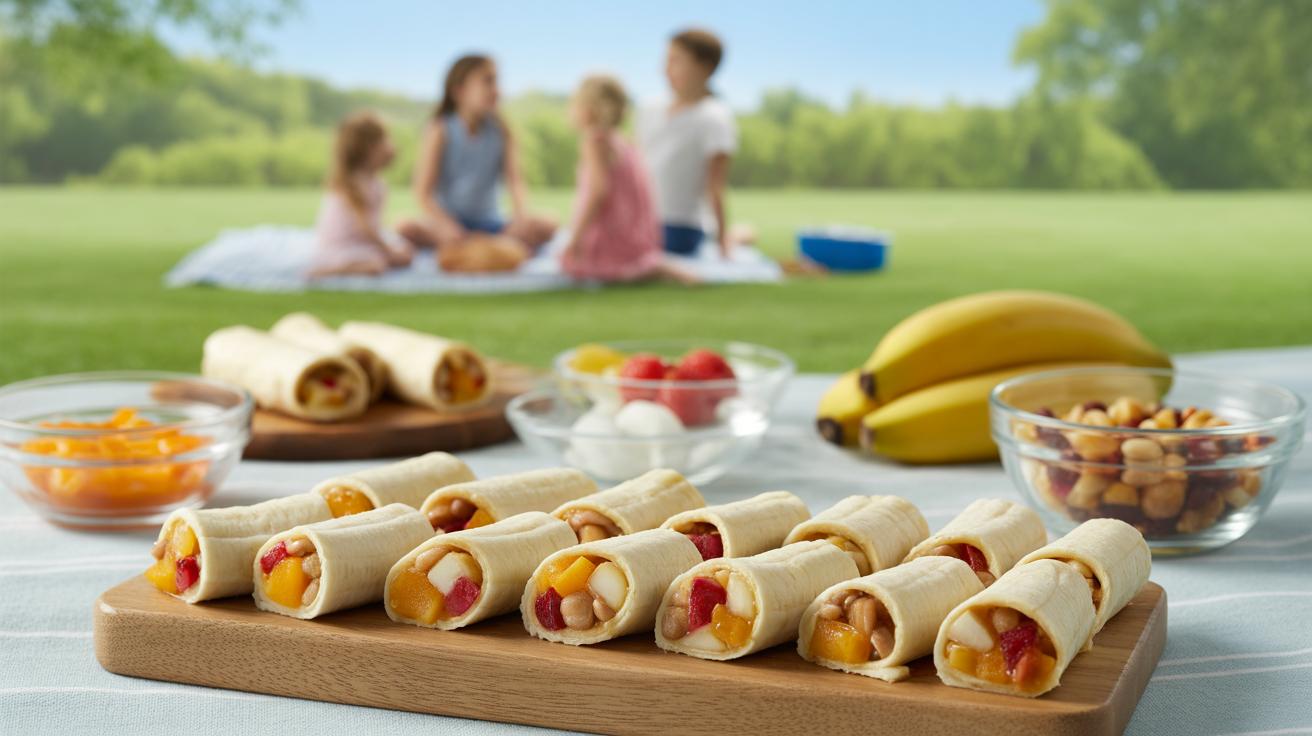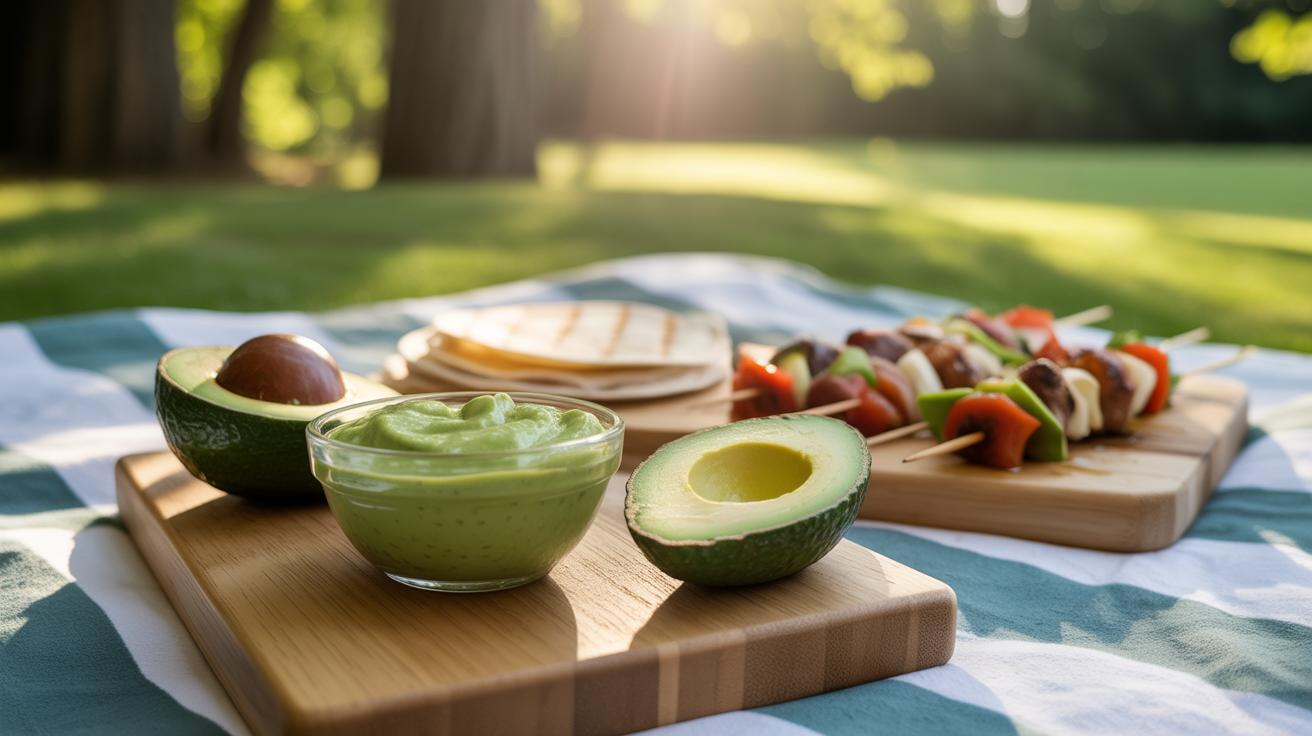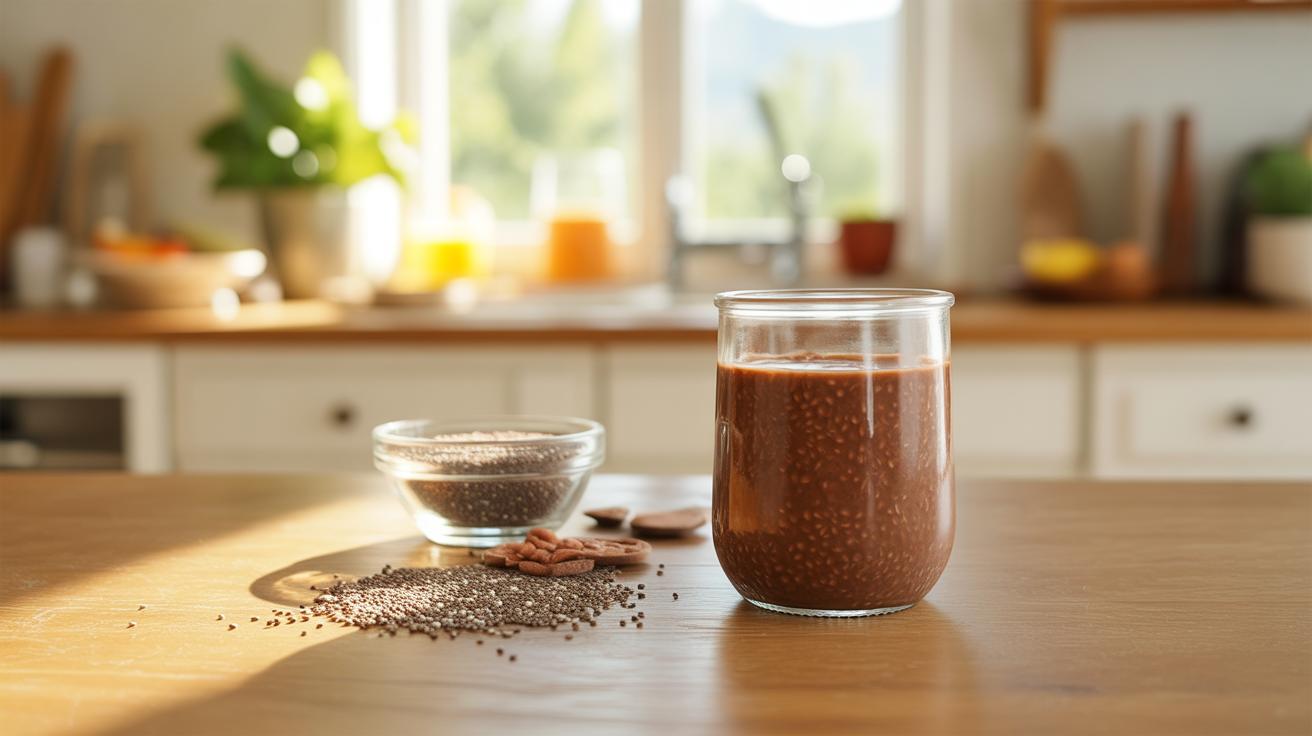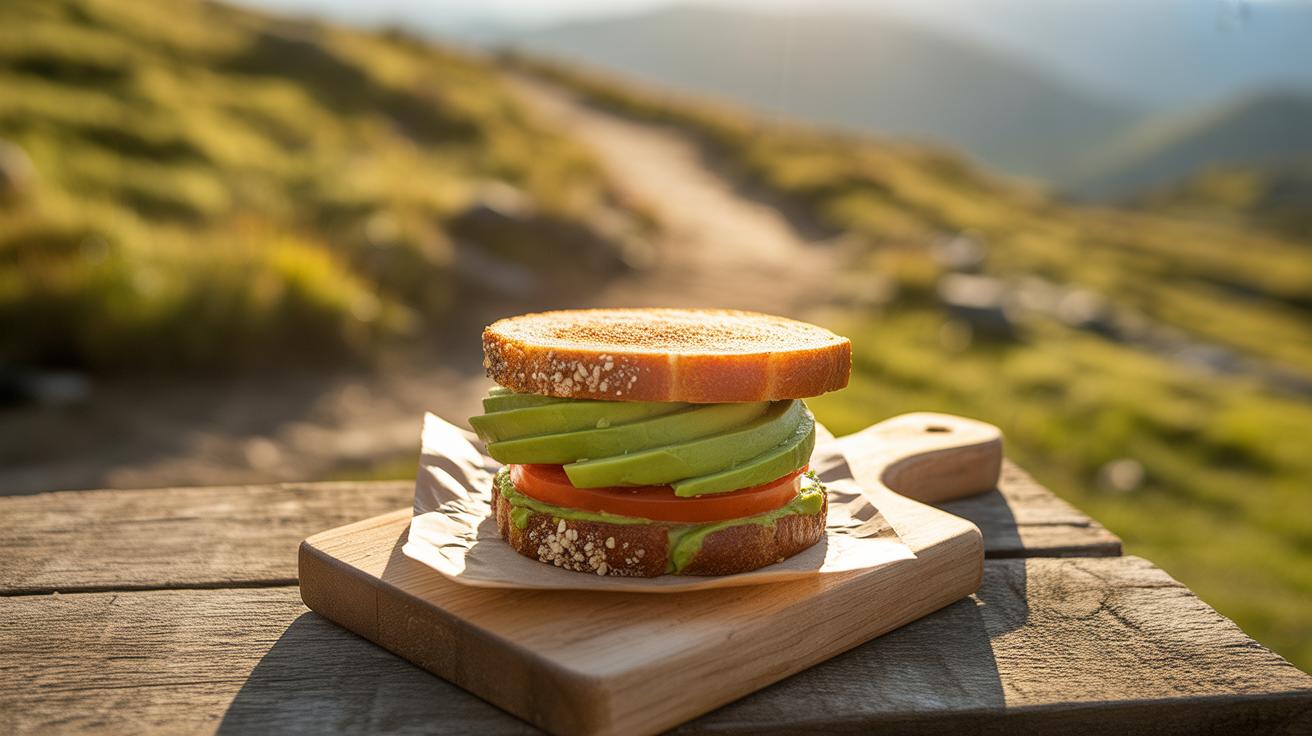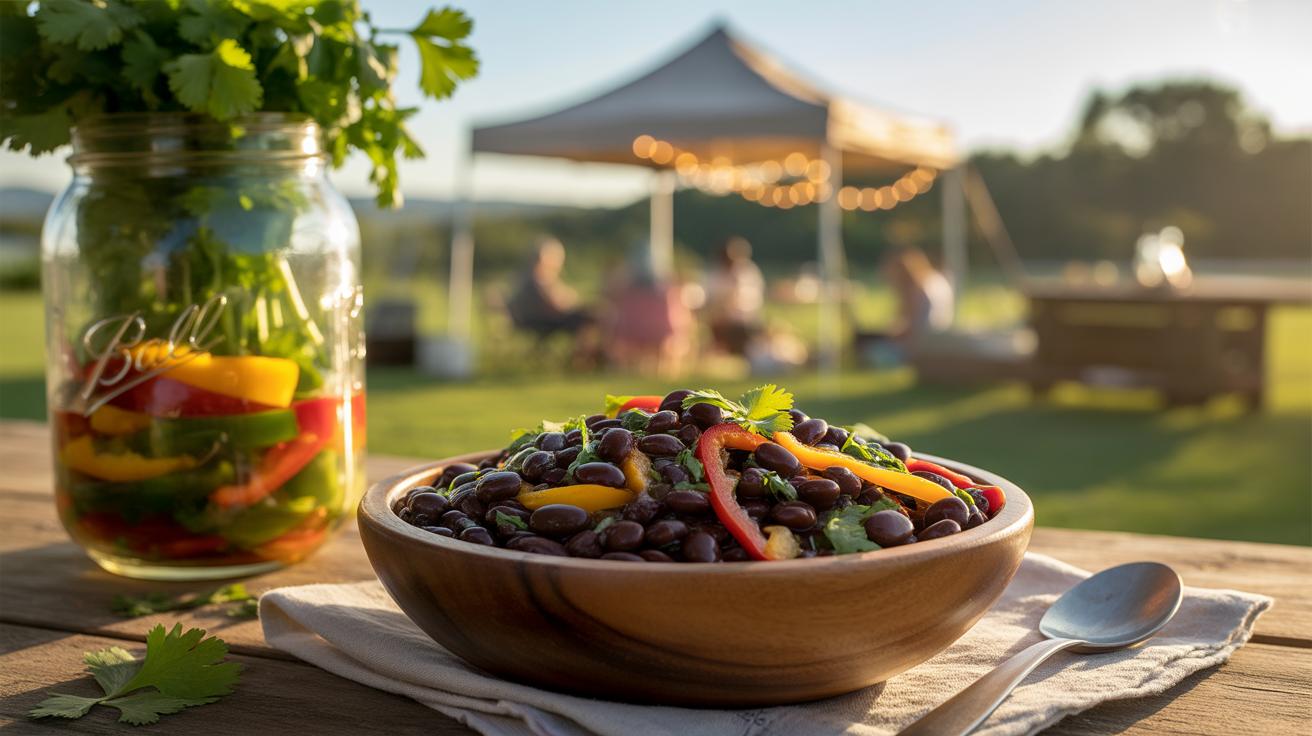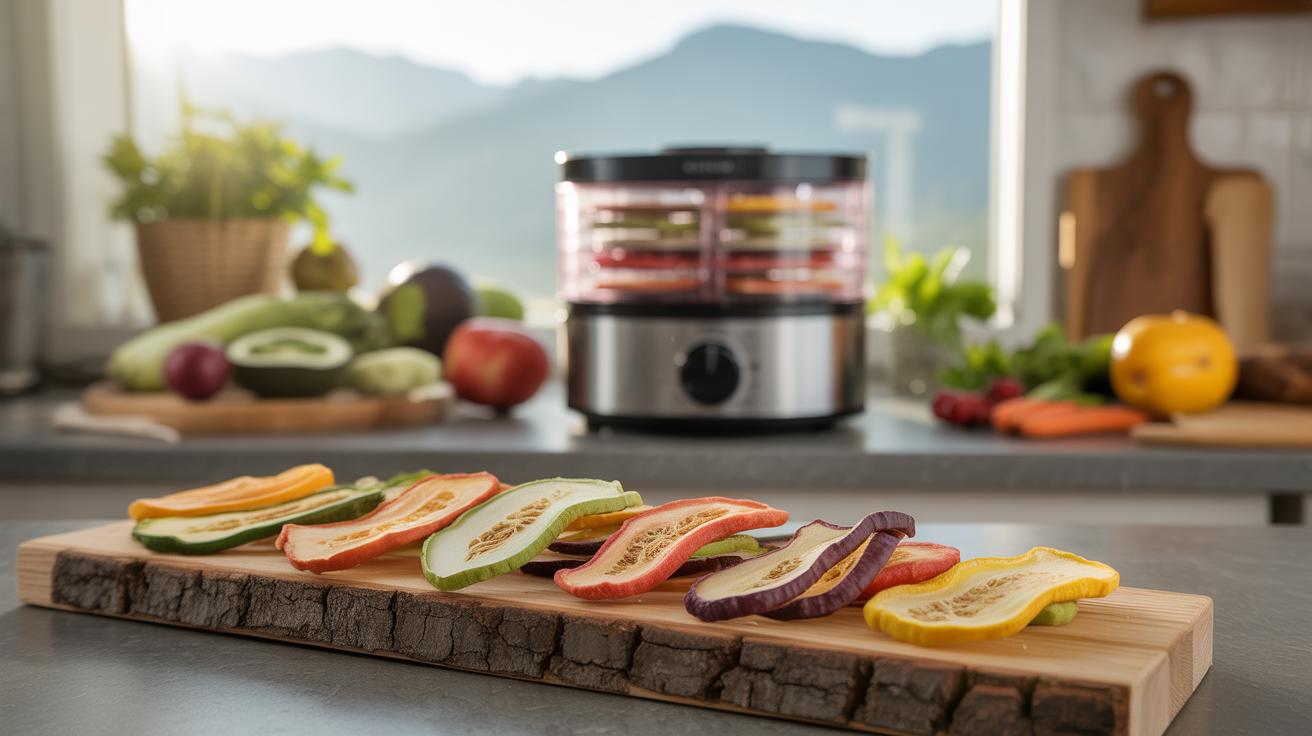Introduction
Banana rolls offer a tasty and convenient option for snacks when you are on the move. These snacks combine the natural sweetness of bananas with various fillings and wraps, providing a quick energy boost and satisfying your hunger.
In this article, you will explore many ideas and techniques on how to make delicious banana rolls. From traditional styles using glutinous rice to creative versions featuring cinnamon or other fillings, learn how to make banana rolls that suit your taste and fit your busy lifestyle.
Understanding Banana Roll
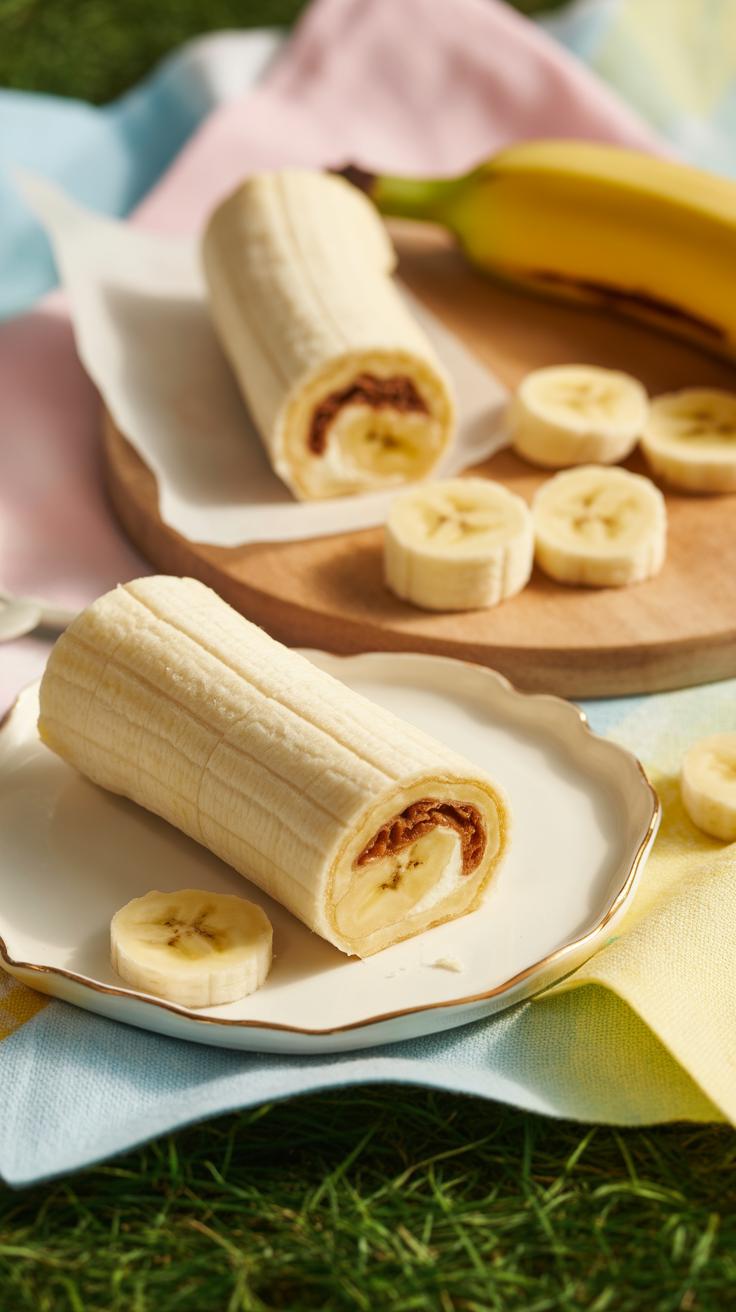
A banana roll is a snack that wraps the sweet and subtle flavor of banana into a soft, chewy exterior. It’s a simple idea—a way to enjoy banana on the go without the mess—but there’s more to it than that. The concept likely traces back to various Asian culinary traditions that use glutinous rice or similar sticky doughs to create handheld treats. Think of it as a hybrid between a dessert and a portable fruit snack, designed to balance texture with flavor.
Its origins aren’t pinpointed to one single culture but rather stem from street foods where portable, easy-to-eat snacks make life simpler. Over time, this snack evolved, incorporating local ingredients or flavor twists depending on where you find it. You might find versions that lean more on the banana itself or focus on accompanying fillings. I’ve tried a few variations, and each one is just a bit different, but that core concept remains—the soft outer layer holding the inside together without overcomplicating things.
Typical ingredients that come together in a banana roll include a sticky dough base—often using glutinous rice flour—a hint of banana puree or banana oil flavor, and sometimes additional flavors like cinnamon or sweet pastes. These pieces combine so the whole snack becomes subtly sweet, a bit chewy, and easy to handle. It’s not loud in taste but quietly satisfying, especially when you want something a bit better than candy but quicker than a meal.
Banana Roll Basics
The structure is deceptively simple. You’ve got a thin layer of soft, sticky dough wrapped or rolled around some form of banana filling. That outer skin is usually glutinous rice dough that’s steamed or lightly cooked to keep it tender and slightly elastic. Inside, the banana—or sometimes a banana-flavored paste—rests snugly, preventing the roll from getting dry or crumbly.
These two main components mingle in texture: the chewy shell and the smooth, sweet center. Occasionally, a filling like cinnamon powder or red bean paste gets tucked in, giving an extra layer of flavor or a little textural contrast. It’s almost like a handheld dessert where both parts support each other. I think that balance is what makes banana roll appealing—you don’t get overwhelmed by either taste or chewiness.
Imagine biting into something that’s just soft enough to squish but still holds shape while delivering a touch of banana’s natural sweetness. The dough doesn’t overshadow the fruit; instead, it cushions it, making each bite consistent and satisfying, especially if you’re munching while moving around.
Traditional Ingredients
Commonly, a banana roll includes:
- Glutinous rice flour – forms the chewy dough exterior, responsible for its sticky, tender texture.
- Banana oil flavor – used either to intensify the banana essence or to mimic it when fresh banana isn’t practical.
- Banana puree or mashed banana – the actual fruit component when fresh banana is in the mix.
- Fillings like cinnamon – adding warmth and slight spice that complements the banana’s sweetness.
- Red bean paste – this might surprise you, but in some recipes, it adds earthiness and density, marrying well with the banana notes.
These ingredients aren’t always all present. Sometimes, the recipe sticks to just rice flour and banana. Other times, a variation sneaks in extra flavors to enrich the experience. The choices often depend on how you want the snack to turn out—pure and straightforward or a bit more layered.
What I find interesting is how the ingredients manage to stay simple yet create a snack with so many subtle layers of taste and texture. If you ever wonder why these rolls feel both familiar and unique, it’s because of this delicate mix of base ingredients combined with little seasonal or cultural twists.
Selecting the Right Banana
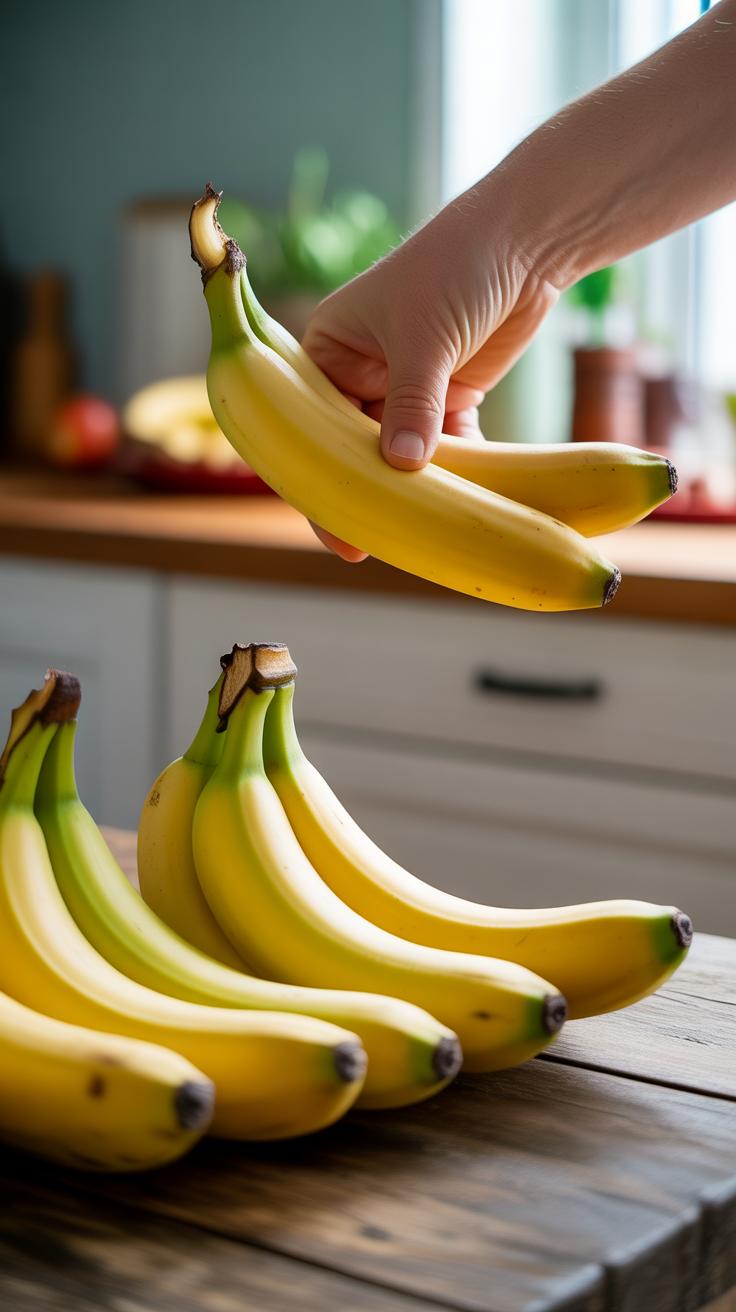
Picking the perfect banana for your roll can make a noticeable difference in taste and texture. The ripeness of the banana influences not just sweetness but also how well it holds together when rolled.
If your bananas are too green, they might be too firm or slightly bitter, which could affect the softness of the roll’s filling. On the other hand, very ripe bananas—those with brown spots or almost fully brown skins—are much sweeter and softer, but they can become mushy and harder to slice neatly.
You might want to aim for bananas that are yellow with just a few brown spots. This stage strikes a good balance between firmness and natural sweetness. That way, your roll won’t fall apart yet still tastes rich and flavorful.
As for banana varieties, most recipes default to the common Cavendish, the banana you find in grocery stores. But there are others worth considering:
- Plantains: Not as sweet, firmer texture, work well if you plan to cook the rolls or want something less sugary.
- Red bananas: Sweeter with a creamy texture, though sometimes softer—so you’ll want to handle them carefully.
- Lady Finger bananas: Smaller and sweeter, their delicate nature fits mini-versions of your banana rolls.
So, you see, the choice varies depending on what texture or level of sweetness you’re aiming for. Have you experimented with different types before? It’s easy to overlook how that subtle variation can change the outcome.
Preparing the Roll Wrap
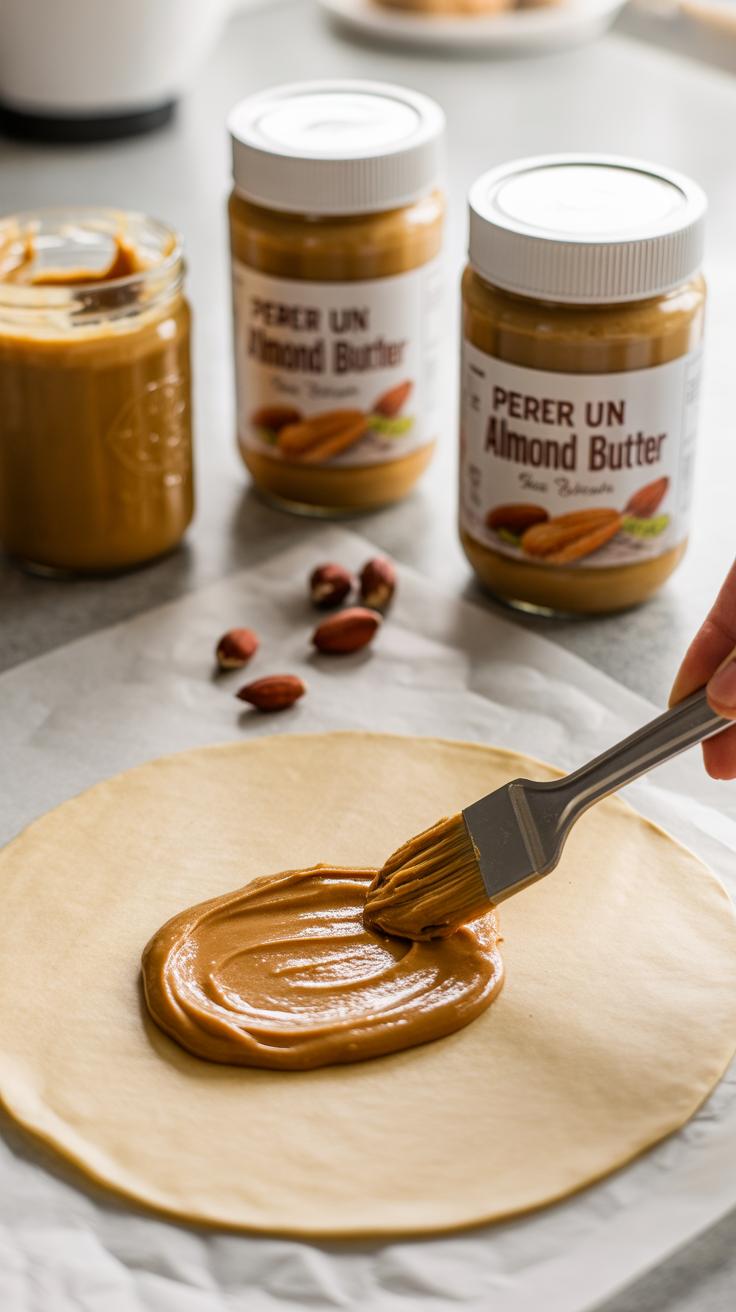
When you think about banana rolls, the outer layer is just as important as what’s inside. It needs to be soft enough to fold or roll without cracking, but also sturdy enough to hold the banana and any additional filling. Traditionally, the wrap is made from glutinous rice dough, which gives that chewy, slightly sticky texture that works well with the sweetness of the banana. Making this dough isn’t as intimidating as it sounds.
Making Glutinous Rice Dough
Start by mixing glutinous rice flour with water, little by little. You want a dough that isn’t too dry but not overly sticky either — some trial and error here is normal. The dough should feel soft and pliable, able to stretch without snapping. Often, a pinch of sugar gets added to deepen the flavor, but that’s optional depending on how sweet you want the rolls. Then, knead the dough on a clean surface for about ten minutes until it’s smooth.
After that, breaking it into small balls and letting them rest for a bit helps the dough relax, making it easier to flatten later. I’ve found steaming the flattened dough for a few minutes softens it perfectly. Steam too long, and it gets gummy; too little, and it stays a bit tough. The timing always feels like a bit of a balancing act.
Other Wrapping Options
If rice dough isn’t your thing or you’re looking for a quicker option, there are alternatives that work surprisingly well. Soft flour tortillas, for instance, can wrap around a banana without breaking, and they add a mild, familiar flavor that won’t steal the spotlight. Just warm them up slightly before rolling to prevent cracking.
Crepes are another option. They bring a delicate texture and can be sweetened or left plain. You can prepare crepes ahead and keep them refrigerated, which might help if you’re packing snacks on the go. Pancakes, cut thinly, can also do the trick, although they’re generally thicker and might overpower the banana a bit.
Trying different wraps can change the whole experience. So, are you ready to experiment a little with what holds your banana roll together? Sometimes the best roll wrap is the one you enjoy making—imperfect edges and all.
Filling Varieties for Banana Rolls

When it comes to filling banana rolls, there’s a surprising range of options that can turn a simple snack into something worth looking forward to. You might think the banana alone is enough, but adding something extra can really change the whole experience. Sweet or savory, the choice is yours, and each brings a different twist.
Classic Sweet Fillings
Classic fillings tend to lean on simple flavors that complement the banana perfectly. Take cinnamon swirl, for example—it adds warmth and a hint of spice that feels just right. Or try diced ripe banana inside for a double dose of that mellow sweetness. Sometimes a sprinkle of sugar or a drizzle of maple syrup can make it extra special. It’s a familiar touch but rarely gets old. You might wonder if something so basic needs anything more, but in many cases, that subtle richness makes the snack feel complete.
Innovative and Savory Fillings
Not everyone wants banana rolls to be just sweet. I’ve found that nuts, like chopped walnuts or almonds, add a nice crunch and a bit of protein. Peanut butter, too, is a favorite for many—it clings to the banana and makes the roll more filling. A little honey can balance the flavors, but I’m sometimes unsure if it’s too sweet when combined with ripe banana. Savory options like a light smear of cream cheese can surprise you, pairing oddly well with the banana’s softness. Exploring these fillings might open up your snack routine more than you expect.
Step by Step Banana Roll Making
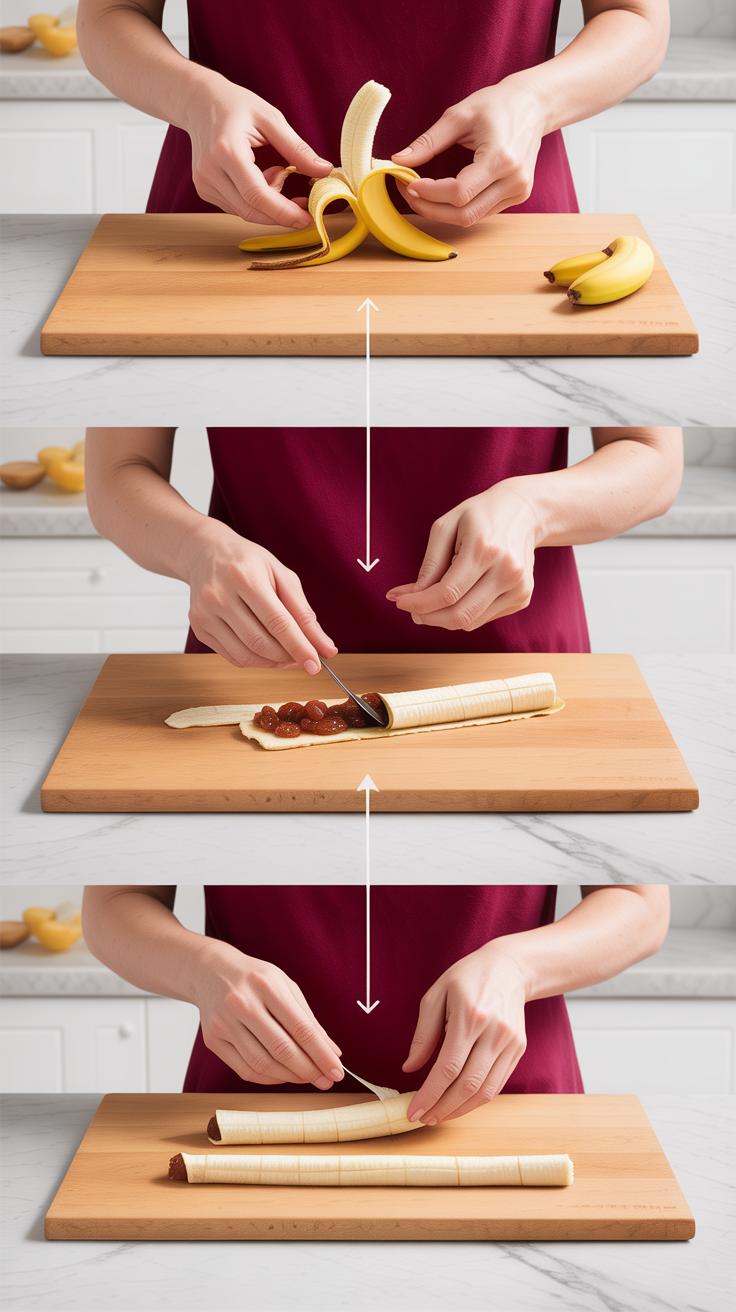
Preparing Ingredients
Start by selecting ripe bananas—not too soft, but easy to slice. Peel and cut them lengthwise into thin strips; this helps the roll stay neat and less bulky. If you’re adding fillings, prepare those ahead. For example, chop nuts, grate cheese, or mix peanut butter with a bit of honey for sweetness. Having everything ready before assembling saves frustration later—trust me, waiting until the last minute can get messy.
Lay out all your ingredients nearby. Keep a damp cloth ready to wipe your hands or knife, since banana slices brown quickly. It’s sometimes tempting to prepare everything at once, but handling banana slices gently is key to avoid mushiness. Take it slow here, you don’t want a sloppy roll.
Rolling and Cooking
Place a banana strip or half a banana on the side of your chosen wrap—could be a tortilla, a crepe, or even a thin slice of bread. Add your fillings along the length, but don’t overload; too much filling can tear your wrap or make rolling awkward. Then, carefully roll from one end, tucking in the sides if possible, like you’re wrapping a small, edible parcel.
If your wrap feels dry or stiff, lightly warming it in a pan or microwave can make rolling easier. Cooking the roll isn’t always necessary, but heating it briefly can meld flavors and soften textures. Pan-frying for a couple of minutes adds a little crispness, which some people enjoy. Others prefer it cold or just room temperature—it’s really up to your taste and schedule.
Try a few techniques—roll tight, roll loose, heat or don’t heat—and see what feels best for you. There’s no one perfect way, and sometimes experimenting is part of the fun.
Storing Banana Rolls for On The Go
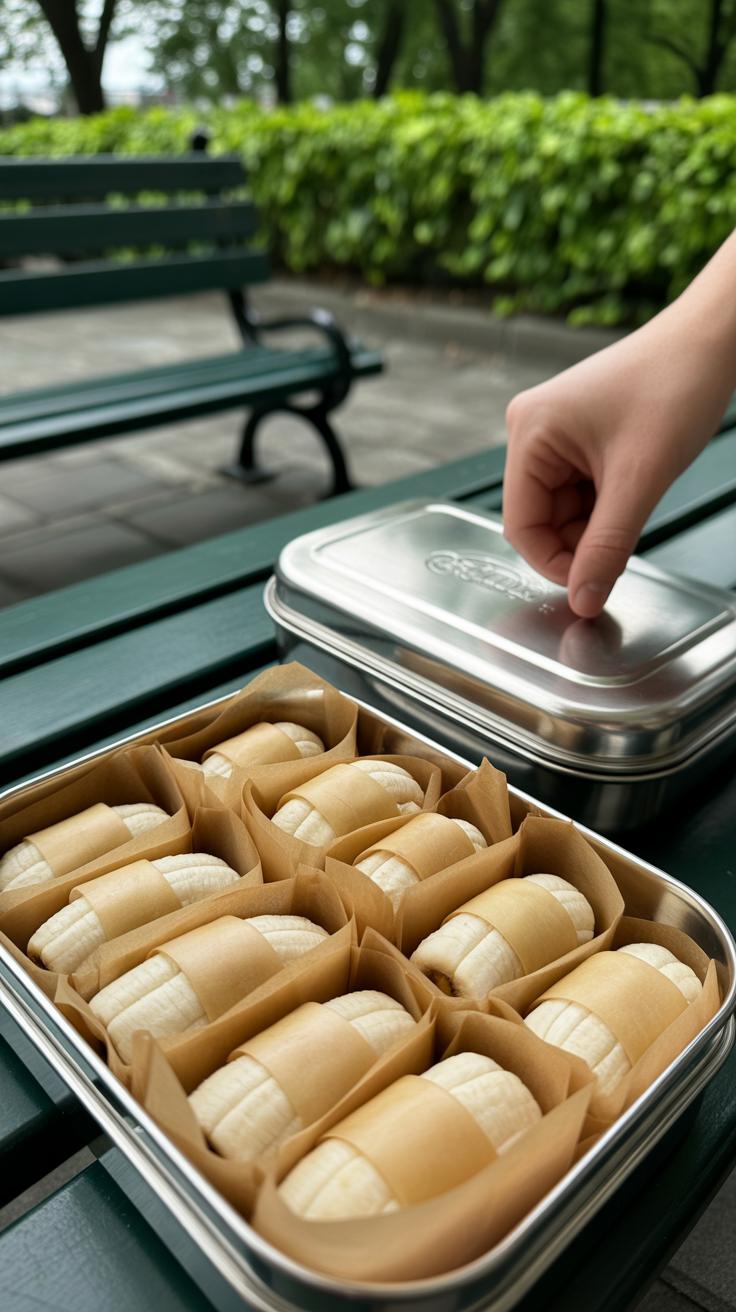
Best Storage Methods
Keeping banana rolls fresh after making them can be a bit tricky, especially since bananas tend to brown quickly. Your best bet is to store them in an airtight container. It slows down moisture loss and helps keep the banana from drying out too fast. If you’ve added ingredients like cream cheese or yogurt, refrigeration is necessary to prevent spoilage.
Wrapping each roll individually in plastic wrap or parchment paper can give an extra layer of protection, preventing them from sticking together or getting squished. Some people swear by a light brush of lemon juice on the cut banana before rolling—it slows browning but can subtly change the flavor, so test it out first.
Room temperature might be okay if you plan to eat the rolls within a few hours. But beyond that, the fridge is safer, even though it can make the wraps less soft. The trade-off between freshness and convenience is something you might have to balance based on your plans.
Packing Tips for Travel
When you’re taking banana rolls on the go, the last thing you want is a mushy mess by lunchtime. Use a lunchbox with a sturdy compartment or add some padding—think a small cloth napkin—to keep the rolls snug and protected from bumps.
Cooling them beforehand helps too. If you pack the rolls cold, they hold their shape better. You can pair them with an ice pack if you need to keep them chilled for several hours. If you’re in a rush, at least try to keep them elevated so they’re not crushed under heavier food items.
Consider bite-sized rolls for travel ease; smaller portions tend to hold together better and make eating less messy. Sometimes, I slice a roll in half and secure it with a toothpick, which can prevent it from unraveling before you take a bite. It might seem fussy, but it works surprisingly well.
So, the key is balance—keeping things cool enough to stay fresh without turning your snack into a cold, tough treat. Have you noticed if your rolls stay better in a particular container or wrapped a certain way? It might take a little experimenting, but once you find your method, these snacks become pretty reliable companions on the move.
Health Benefits of Banana Rolls
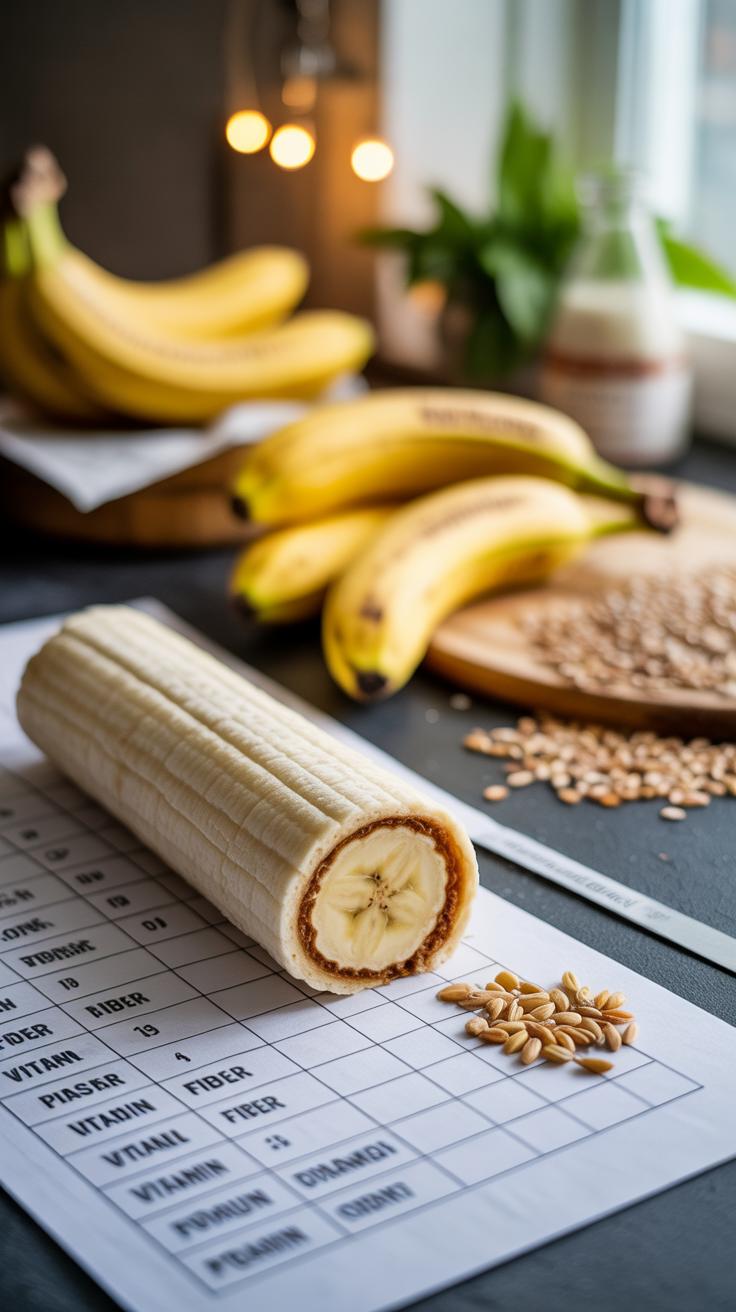
Bananas and Energy
Banana rolls are a quick source of energy, thanks mostly to the fruit’s natural sugars like glucose and fructose. These sugars get absorbed fairly fast, giving you a noticeable energy boost without the crash that processed snacks often cause. If you’ve ever grabbed a banana before a workout or long trip, you’ve probably felt that quick pick-me-up.
Besides the energy jolt, bananas provide several essential vitamins. Vitamin B6 supports brain health and mood regulation, while vitamin C helps both your immune system and skin. Plus, the potassium found in bananas plays a role in muscle function and heart health. So, eating banana rolls isn’t just about filling your stomach; it also quietly supports vital body functions.
Nutritious Ingredients
One reason banana rolls stand out as a snack is how easy it is to control what goes into them. Using natural ingredients keeps them wholesome and straightforward. That means minimal added sugars—just the sweetness from the banana itself.
When you avoid processed sugars, you’re sidestepping the unnecessary calories and blood sugar spikes that can sap your energy later. Instead, you get nutrients from wholesome components like oats, nuts, or whole-grain wraps. These can add fiber and healthy fats, which slow digestion slightly and help you feel full longer.
Perhaps it’s the simplicity of these rolls that makes them so appealing: you know exactly what you’re eating. No surprises. You can even experiment with different combos, making them a reliable part of a balanced, on-the-go diet.
Creative Banana Roll Recipes
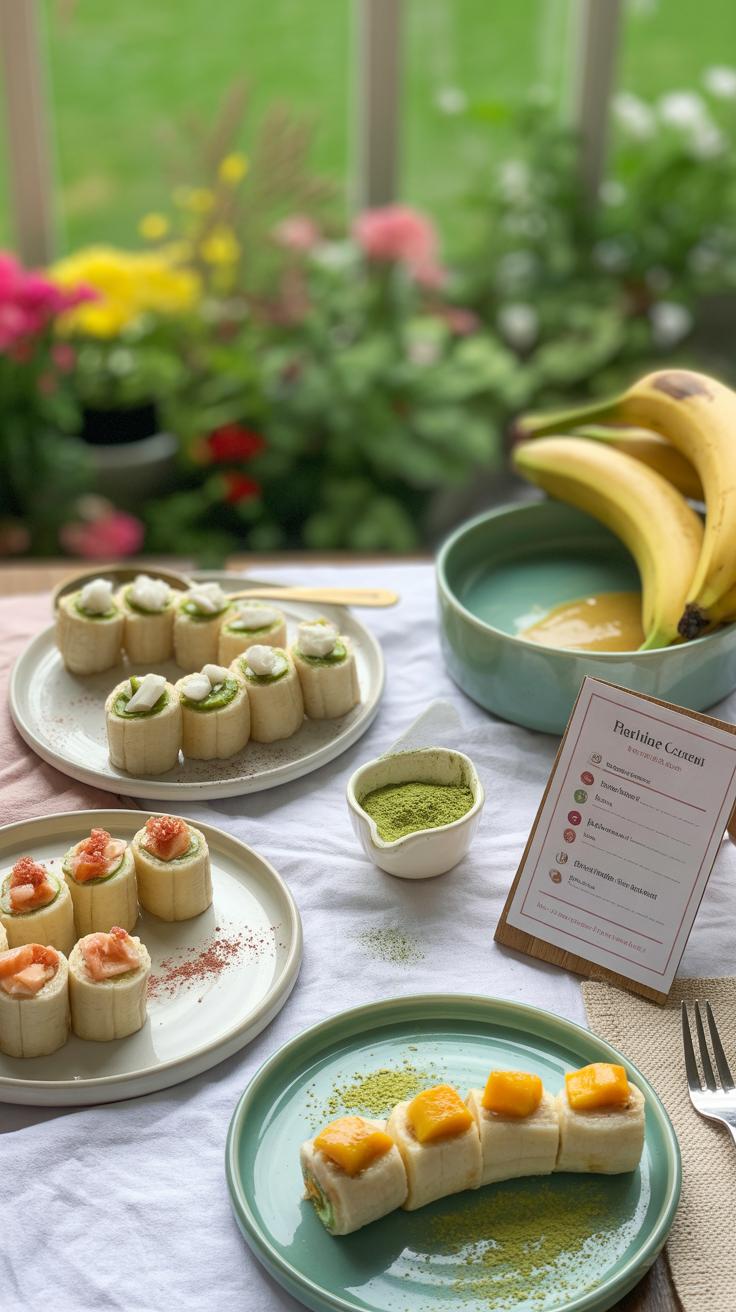
Banana rolls offer a blank canvas for all sorts of flavors. You might think they’re just humble snacks, but there’s a surprising variety to explore, depending on what you pair with the banana. Let’s talk about some ideas that go beyond the usual.
For something sweet, imagine rolling a banana inside a thin layer of peanut butter and sprinkling cinnamon before wrapping it up with a bit of honey drizzle. The mix of creamy, sweet, and slightly spicy elements works really well. Or try spreading Nutella, then adding crushed nuts like almonds or pecans for extra crunch.
On the savory side, you could spread cream cheese mixed with finely chopped herbs like chives or dill. Wrapping the banana with a thin slice of smoked turkey or prosciutto adds some salty depth, balancing the banana’s sweetness in an unexpected way. I’ve tried this combo and, honestly, it’s a bit odd at first—but then surprisingly tasty.
Here are some recipe sparks to consider:
- Sweet roll: banana + chocolate spread + crushed hazelnuts
- Sweet roll variant: banana + caramel sauce + sea salt flakes
- Savory roll: banana + goat cheese + fresh basil leaves
- Savory twist: banana + cheddar cheese + a touch of black pepper
- Mixed idea: banana spread with almond butter + a sprinkle of coconut flakes + a pinch of cinnamon
These ideas might feel a little unconventional, especially savory banana rolls. But isn’t that the fun part? Experimenting with what you have on hand might lead to your new favorite quick snack. What flavors do you think would surprise you?
Banana Rolls Around the World
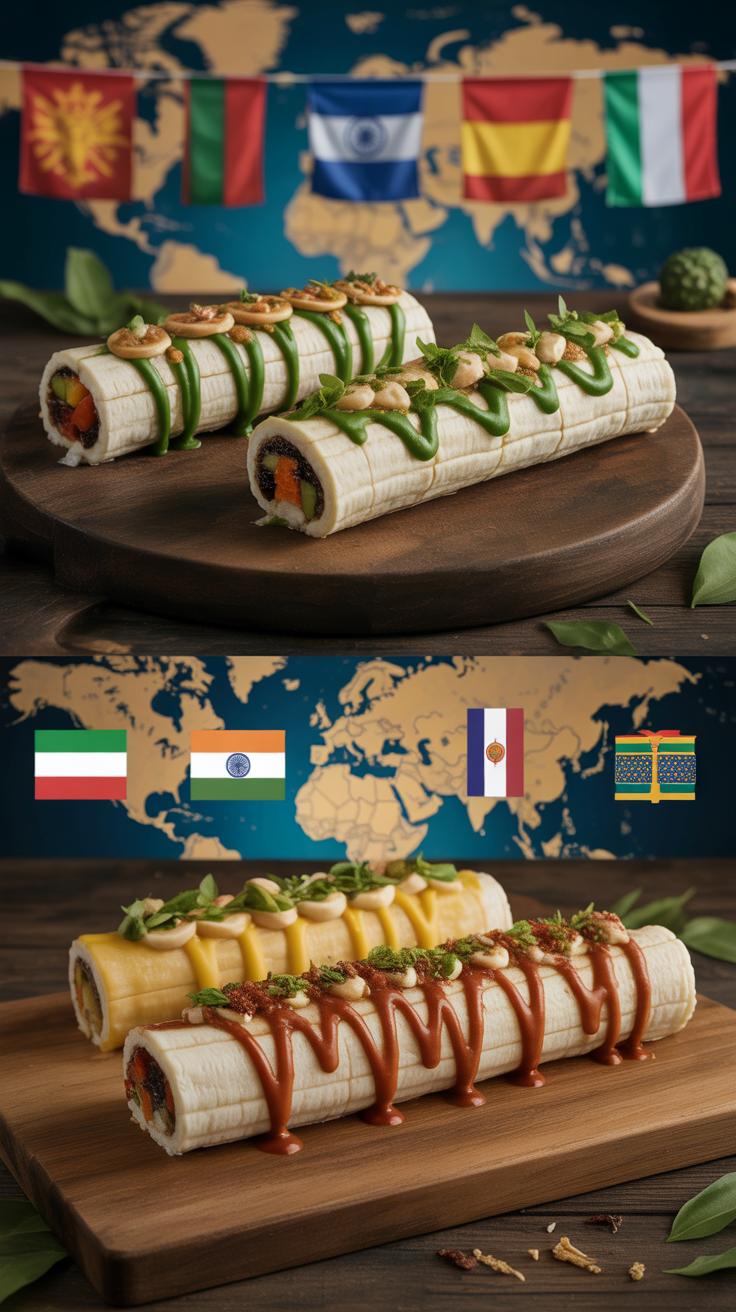
Asian Influences
If you wander through street markets in Hong Kong or the Philippines, you’ll find banana-based treats that might remind you of banana rolls—but they take various creative forms. In Hong Kong, for example, there’s a simple delight called banana pancake. It’s a thin, crepe-like wrap filled with ripe banana, sometimes with a hint of condensed milk. It’s easy to carry and perfect for a quick snack. The texture blends soft banana with a slightly chewy exterior, sort of like a banana roll but thinner and more delicate. I tried one once at a small stall, and honestly, the mix felt both familiar and refreshingly different.
Moving to the Philippines, you’ll discover “banana cue,” which is essentially deep-fried bananas coated in caramelized sugar on a skewer. It lacks the traditional roll shape but captures the essence of portable, banana-based comfort food. And then there’s “turon”—a fried banana roll wrapped in spring roll wrapper, often with jackfruit. The crunch outside contrasts with the sweet softness inside; it’s a popular snack that’s easy to eat on the go, quite close in spirit to your usual banana roll.
Global Banana Snacks
Beyond Asia, banana rolls share some DNA with other popular snacks worldwide. Take banana chips, for example. Thinly sliced and fried or baked, these crisps are an easy grab-and-go snack. While they don’t wrap anything, they provide that punch of banana flavor, just in a very different format. They work well when you want portability but with a crunch, something banana rolls don’t usually offer.
And then there’s banana bread—a classic comfort food that you might not immediately link to banana rolls. But when you think about it, both rely on ripe bananas to create a satisfying, sweet snack or quick bite. Banana bread feels heavier and less “roll-like,” but it’s often enjoyed as a hand-held snack, just like banana rolls. I find that both speak to that craving for something wholesome, sweet, and banana-rich.
So, banana rolls don’t exist in isolation. They echo in diverse snacks around the globe, adapting to local tastes and snack customs. The takeaway? There’s no single way to enjoy banana on the go—just tons of tasty variations waiting to be explored.
Tips for Perfect Banana Rolls Every Time
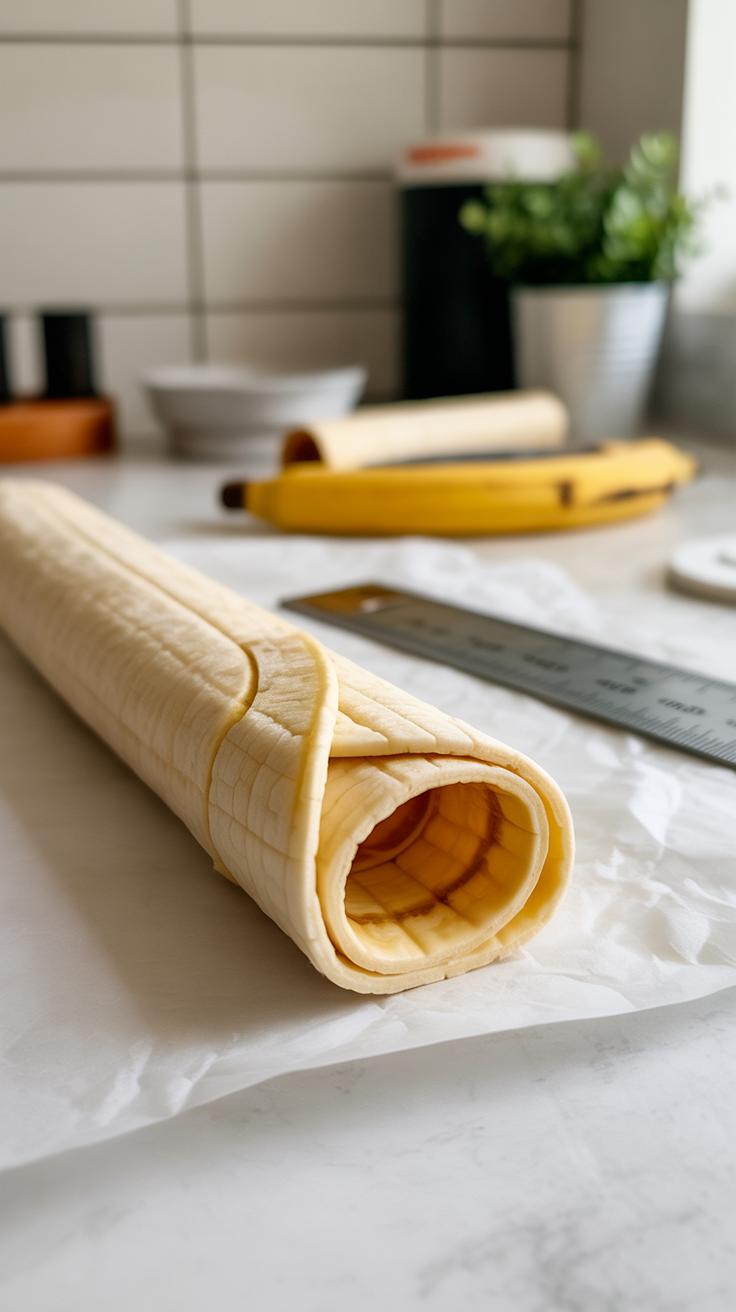
Avoiding Common Mistakes
One thing I’ve learned is that overripe bananas can either make or break your roll. Too mushy, and the roll falls apart; too firm, and it feels dry. Finding that sweet spot isn’t always obvious. Try slightly ripe bananas with just a few brown spots—they tend to hold together better.
Another common slip is rolling the banana too tightly. It’s tempting to make a compact roll, but this can cause the filling to squeeze out or the wrap to tear. Give it some gentle room to breathe. Also, avoid soggy wrappers by draining any excess moisture from ingredients before wrapping them up.
Enhancing Flavor and Texture
If you want richer taste, think about layering flavors carefully rather than throwing everything inside at once. For example, a light spread of nut butter can add creaminess and contrast the banana’s sweetness nicely. A sprinkle of cinnamon or a dash of citrus zest can lift the whole roll without overpowering it.
Texture-wise, adding a crunchy element such as nuts or granola can make your banana rolls more interesting to eat. It creates a nice balance with the soft banana. I’m still experimenting, but combining toasted coconut flakes or seeds has worked surprisingly well.
Have you tried chilling your rolls briefly before eating? It helps the ingredients meld together and can prevent the filling from slipping out too fast. It’s a small step, but makes a big difference if you’re packing these for a busy day.
Conclusions
Banana rolls are simple to make and can be tailored with different ingredients and flavors to match your preference. They provide a practical, portable snack that can keep you energized throughout your day.
By trying different recipes and fillings, you can enjoy a variety of banana roll snacks whenever you need a quick bite. Use these ideas to inspire your own creations and make your on-the-go snacking both delicious and healthy.


